
Pheasant is a luxury game bird, and it deserves nothing less than a perfect preparation. Part of giving this noble animal an equally fitting finish is keeping the breasts moist during cooking, a task that begins right after you shoot the bird and ends just before you serve it. Pheasant breast doesn't have enough fat to make it as naturally tender and juicy as the thigh, but it comes close if you keep the skin on and choose a cooking method that helps it retain as much moisture as possible.
Preparation or Selection
Don't skin the pheasants you shot, and if you buy them, purchase only skin-on pheasant breasts. Skin is the first defense against breast-meat dryness and a valuable source of fat in an otherwise lean meat. Skin keeps dry heat from coming in contact with the breast meat during cooking, and its fat renders out during cooking, coating the muscle fibers with flavor and lubricating them during chewing. If you are only able to cook skinless pheasant breast, you should use a moist-heat cooking method to help keep it as moist as possible.
Moist Heat Cooking Method
Deep poaching is the only way to go if you have a skinless pheasant breast. Dry-heat cooking pulls moisture out of the breast while the heat moves inward, drying out the surface within a few minutes, without providing the bonus of a crispy crackling. Deep poaching, on the other hand, surrounds the breast in a low-temperature cooking medium liquid until the pheasant breast barely cooks through, eliminating the risk of drying or overcooking. To deep poach a skinless pheasant breast, place it in a heavy-bottomed pan and cover it with 1 or 2 inches of stock, butter or olive oil. Add fresh herbs and aromatic spices to the medium, then attach a deep-frying thermometer to the pan. Heat the cooking medium until it maintains 165 degrees Fahrenheit and cook the breast until the internal temperature measures 165 F, about 45 minutes.
Dry Heat Cooking Method
Make the most of a skin-on pheasant breast by roasting it at low heat, then giving it a hard, high-temperature sear at the finish to crisp it. Start by letting the pheasant breast reach room temperature and setting the oven to 225 F. Season the breast all over with kosher salt and freshly ground pepper and slide it in the oven on a rack set on top of a rimmed baking sheet. Roast the breast until it reaches 155 F in the thickest portion and heat a scant amount of oil over medium-high heat until it starts to smoke. Lay the breast skin-side down in the pan, sear it for 30 seconds and repeat on the other side for 15 seconds.
Rest Your Breast
Resting the pheasant breast after cooking it -- letting it sit at room temperature on a plate for about 10 minutes before slicing it -- helps it retain all those precious juices you worked so hard to preserve during cooking. As cooked protein cooks, the moisture in its fibers moves toward the exterior, where about 10 to 20 percent of it escapes, no matter what you do. Slicing the breast right after cooking causes the breast to lose even more moisture. However, at rest, the protein fibers relax and allow the moisture still at the tips of the fibers to return toward the center and redistribute. So rest the breast for at least 10 minutes before you tear into it.
Related Articles

How to Cook a Crispy & Juicy Whole Duck

Difference in Cook Time Between Bone-in ...
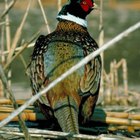
The Best Ways to Cook Pheasant Breast

How to Marinate BBQ Chicken Thighs & ...

Can I Cook Duck in Low Temperatures to ...
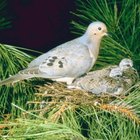
How to Clean and Cook a Mourning Dove
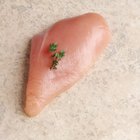
How to Poach Chicken Breasts for ...
How to Cook a Whole 15-Pound New York ...
The Best Way to Cook a Small Turkey ...

How to Cook Turkey Legs on the Grill

How to Cook a Turkey Leg & Breast

How to Cook a Goose on the Grill

How to Broil Chicken on the Bone
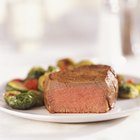
How Much Does Meat Shrink After It Is ...

How to Make a Saran Wrap Girdle

Does Cooking at a Low Temperature for a ...
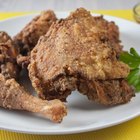
How to Make Good, Crispy Fried Chicken
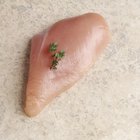
How to Cook Boneless Chicken Breasts in ...
How to Cook Sturgeon on the Grill
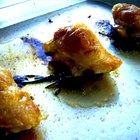
How to Cook Chicken Thighs
Writer Bio
A.J. Andrews' work has appeared in Food and Wine, Fricote and "BBC Good Food." He lives in Europe where he bakes with wild yeast, milks goats for cheese and prepares for the Court of Master Sommeliers level II exam. Andrews received formal training at Le Cordon Bleu.
Photo Credits
Jupiterimages/Stockbyte/Getty Images